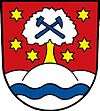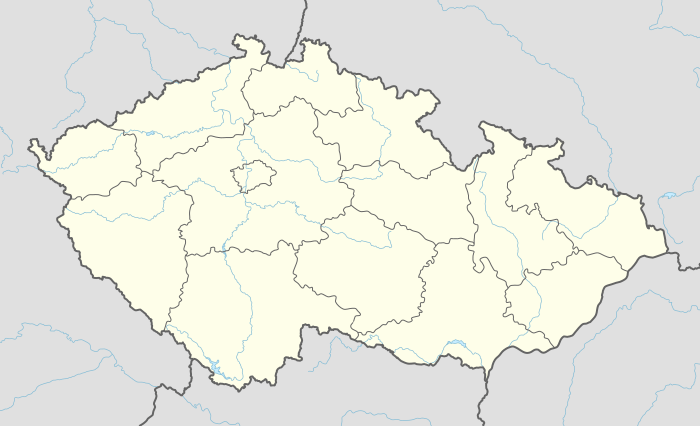Ruda nad Moravou
Ruda nad Moravou (German: Eisenberg))[1] is a village and municipality (obec) in Šumperk District in the Olomouc Region of the Czech Republic.
Ruda nad Moravou | |
|---|---|
Municipality | |
 Ruda nad Moravou | |
 Flag  Coat of arms | |
 Ruda nad Moravou | |
| Coordinates: 49°58′47″N 16°52′27″E | |
| Country | |
| Region | Olomouc |
| District | Šumperk |
| Area | |
| • Total | 25.01 km2 (9.66 sq mi) |
| Elevation | 325 m (1,066 ft) |
| Population (2006) | |
| • Total | 2,560 |
| • Density | 100/km2 (270/sq mi) |
| Postal code | 789 63 |
| Website | http://www.ruda.cz |
The municipality covers an area of 25.01 square kilometres (9.66 sq mi), and has a population of 2,560 (as at 28 August 2006).
Ruda nad Moravou lies approximately 8 kilometres (5 mi) west of Šumperk, 51 km (32 mi) north-west of Olomouc, and 176 km (109 mi) east of Prague.
Ruda nad Moravou council also administers villages of Bartoňov, Radomilov, Hrabenov, Hostice, and Štědrákova lhota.
Significant company located in Ruda nad Moravou is Lesy Ruda a.s. that harvest wood in nearby forests. Former rich sources of iron ore are completely depleted .The area is served by several bus lines and railroad line Nr. 292, the station Ruda nad Moravou.
Etymology
The origin of the name is connected with iron ore mining, "Ruda" means "Ore" in Czech language. From 1920, the village is named as Ruda nad Moravou, literally "Ore above Moravia river" to make the name more specific. In old Latin sources, the municipality is named Ferreus Mons, Iron Mountain. Germans called the village as Eisenberg with meaning the Iron Mountain as well.
History
The oldest notes about Ruda nad Moravou come from the early 14th century when iron ore was mined. Lord Bernard ze Žerotína built a renaissance château in the early 17th century which is abandoned today and in poor condition. The village was heavily stroke by events of Thirty Years' war. In 1896, the settlement was divided to two parts, the Czech Horní Ruda (literally Upper Ruda) and the Sudeten German Dolní Ruda (literally Lower Ruda). This two villages were united again in 1920. Distillery was established in 1838, operating to 1934. Its architecturally valuable Empire building has been preserved. During the interwar period, manufactories producing sweets, gingerbread and buttons as well as a tannery were situated in the village.
About 120 Sudeten Germans lived in Ruda nad Moravou in 1930, all of them were expelled after World War II.
Manor owners
- The house of Páni ze Štenberka, unknown - 1397
- The house of Páni z Kravař, 1397–1447
- The house of Tunklové z Brníčka a na Zábřehu, 1508
- Mikuláš Trčka z Lípy, 1508–1512
- The house of Páni z Boskovic, 1512–1596
- The house of Zierotin, 1596–1622
- The house of Lichtenstein, 1622–1848
Gallery
 The church in Ruda nad Moravou
The church in Ruda nad Moravou The castle in Ruda nad Moravou
The castle in Ruda nad Moravou The castle in Ruda nad Moravou
The castle in Ruda nad Moravou
References
| Wikimedia Commons has media related to Ruda nad Moravou. |
- kolektivem, Miloš Melzer, Jindřich Schulz s (1993). Vlastivěda Šumperskeho okresu (Vyd. 1. ed.). Šumperk: Okresní úřad Šumperk a Okresní vlastivědné muzeum Šumperk. ISBN 80-85083-02-7.